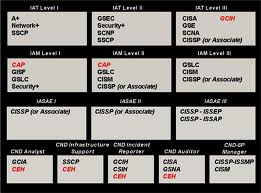Course Overview:
Through an introduction to Docker, Kubernetes, and Red Hat OpenShift Platform, this training course helps you understand one of the key tenets of the DevOps and DevSecOps Platform (DSOP) movement: continuous integration and continuous deployment. The CI/CD pipeline becomes well understood and implemented in an open architecture. Containers have become a key technology for the configuration and deployment of applications and micro services. Kubernetes is a container orchestration platform that provides foundational services in Red Hat OpenShift Container Platform, which allows enterprises to manage container deployments and scale their applications using Kubernetes.
This training course provides an overview of the DoD Enterprise DevSecOps Platform (DSOP) Reference Design, its current state, and ties to DoD Cloud Platform One (P1). Workflows of the DoD Iron Bank container repository are introduced, along with an overview of the DoD Pipeline as represented in Big Bang. Continuous authorization cATO via Party Bus within NIST RMF is presented. You will become aware of the Platform One (P1) integrations and relationship to Docker, Kubernetes, Istio (Red Hat OpenShift Service Mesh) and Red Hat OpenShift Platform.
In addition to gaining an understanding of these tools, you will build core administration skills through the installation, configuration, and management of an OpenShift cluster and containerized applications.
Course Objectives:
- Learn about Containers, Docker, Kubernetes, and OpenShift architecture
- Overview DoD Enterprise DevSecOps Platform (DSOP) Reference Design and DoD Cloud Platform One (P1)
- Tie together awareness of various DoD Cloud offerings and their relationships
- Create containerized services
- Manage containers and container images
- Deploy multi-container applications
- Install an OpenShift cluster
- Configure and manage masters and nodes
- Secure OpenShift
- Control access to resources on OpenShift
- Monitor and collect metrics on OpenShift
- Deploy applications on OpenShift using source-to-image (S2I)
- Manage storage on OpenShift
Course Outline:
- Getting started with container technology
- Creating containerized services
- Managing containers
- Managing container images
- Creating custom container images
- Deploying containerized applications on OpenShift
- Deploying multi-container applications
- Troubleshooting containerized applications
- Comprehensive Review of Introduction to Container, Kubernetes, and RedHat OpenShift
- Introducing Red Hat OpenShift Container Platform
- Installing OpenShift Container Platform
- Describing and exploring OpenShift networking concepts
- Executing commands
- Controlling access to OpenShift resources
- Allocating persistent storage
- Managing application deployments
- Installing and configuring the metrics subsystem
- Managing and monitoring OpenShift Container Platform
Dates/Locations:
No Events
Duration: 5 Days
Prerequisites:
- Ability to use a Linux® terminal session and issue operating system commands
- Good foundation in Linux
- Experience with web application architectures and their corresponding technologies
Target Audience:
- Developers who wish to containerize software applications
- Administrators who are new to container technology and container orchestration
- Architects who are considering using container technologies in software architectures
- System administrators
- System architects
- Architects and developers who want to install and configure OpenShift Container Platform
- Those working in the field of DevSecOps supporting DoD Platform One (P1) and other implementations
Comments
Latest comments from students
Liked the class? Then let everyone know!
